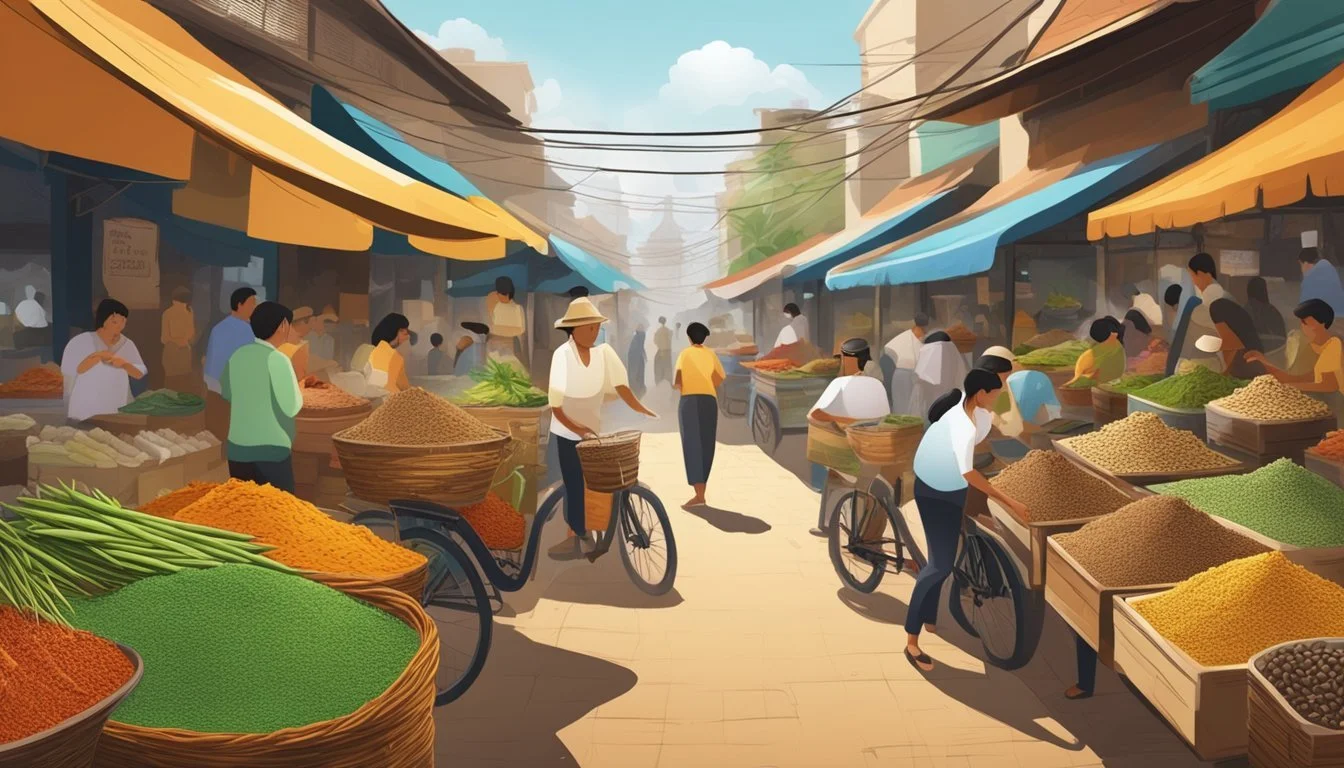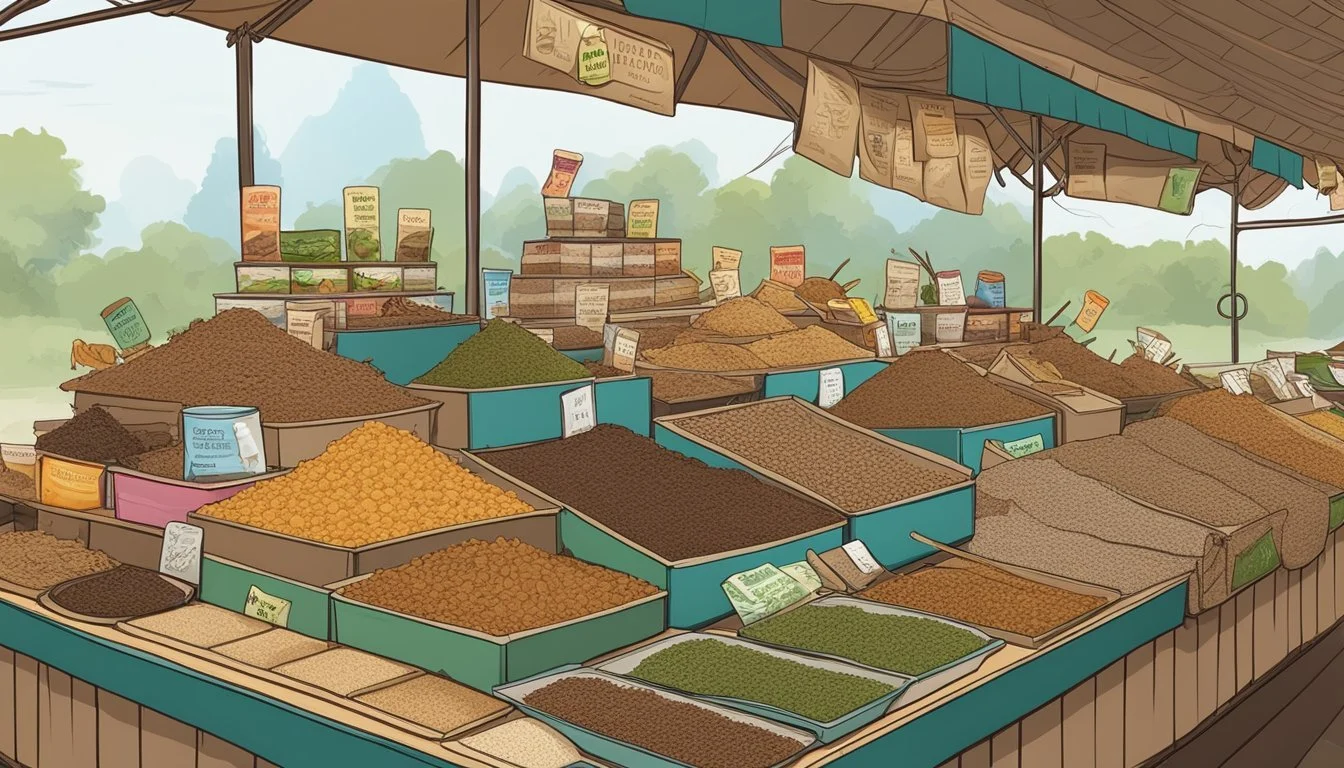Jing Leed Thailand's Protein-Packed Edible Crickets - A Sustainable Food Source
Across the bustling street food markets of Thailand, a culinary treasure that packs a protein punch can be found. Jing Leed or fried crickets are a popular snack known for their crunchy texture and savory flavor, often seasoned with Thai spices and herbs. Consumed either as a snack on their own or as a component in various dishes, these insects are more than just a novelty food item; they represent a sustainable source of nutrition with a longstanding position in Thai cuisine.
The benefits of edible crickets are manifold. Crickets require fewer resources to raise than traditional livestock and are a highly efficient means of protein production, both environmentally and economically. With their high reproduction rate, they emerge as a fortifying protein supply which is vital in a world facing unsustainable meat production and environmental concerns. They offer a pathway to food security while respecting the planet's limitations.
In Thailand, crickets have bridged the gap between a traditional food source and a modern dietary trend. Their integration into the local diet is a testament to their versatility and nutritional value. Deep-fried and seasoned to perfection, Jing Leed stands at the heart of Thailand's street food scene, challenging conventional food preferences and redefining what constitutes a protein-rich snack.
The Rise of Edible Insects
Edible insects, particularly crickets known as Jing Leed in Thailand, are gaining attention as a sustainable and economical protein source. This trend leverages Thailand's rich tradition of entomophagy and reflects a growing global awareness of the environmental impact of food choices.
Cultural Significance
Edible insects have been a part of Thai cuisine for generations, often associated with a sense of nostalgia and national pride. Jing Leed, or edible crickets, are not only a customary dish but also hold a place in local festivity and street food culture. They offer a unique experience for tourists and are a staple snack in many regions. Their established presence in Thai markets indicates the cultural acceptance and popularity of these insects as a food source.
Economic Impact
The commercialization of edible insects, particularly cricket farming, has marked a new era in Thailand's food industry. With store availability increasing, consumers can now find Jing Leed in various forms – fresh, dried, or as an ingredient in food products. This has positive implications for local agriculture and business.
Farmers: Cricket farming requires relatively low startup costs, offering an attractive livelihood option.
Processors: A growing number of processors are specializing in insect-based food products, expanding market reach.
Retailers: Variety of products containing Jing Leed are stocked on shelves, from protein bars to flavored snacks.
Export Potential: As global interest grows, there's potential for international trade expansion.
The commercialization efforts enhance the economic value chain, from farmers to retailers, solidifying the role of edible insects in Thailand's economy.
Jing Leed: A Nutritional Profile
Jing Leed, also known as fried crickets, is a culinary staple in Thailand that boasts significant nutritional value.
Protein Content
Jing Leed offers a high protein content, rivaling that of conventional meat sources. These edible crickets typically contain roughly 65-70% protein by dry weight, a rate beneficial to muscle repair and growth.
Health Benefits
In addition to protein, edible crickets like Jing Leed contain a profile of essential amino acids and vitamins, such as B12. Their fat profile includes polyunsaturated and monounsaturated fats, known for supporting heart health. Jing Leed also provides an array of minerals, including iron, zinc, and magnesium.
Farming Practices in Thailand
In Thailand, cricket farming has evolved into a structured practice focused on sustainable protein production, employing methods that have been developed and refined since 1998. The number of cricket farmers has grown to over 20,000, indicating a significant niche within the nation's agricultural sector.
Sustainable Farming
Thailand's cricket farming is recognized for its low environmental impact. Cricket farms require far less land, water, and feed than traditional livestock farming. This efficient use of resources is rooted in the inherent nature of insects to convert feed into protein more effectively. Additionally, cricket farmers in Thailand are encouraged to adopt Good Farming Practices (GFP) and Good Manufacturing Practices (GMP), setting standards that ensure sustainable and safe production.
Resource Efficiency: Crickets consume minimal resources for the amount of protein they produce.
Farming Standards: Adoption of GFP and GMP to maintain sustainable farming practices.
Harvesting Methods
Cricket harvesting in Thailand is carried out on a medium scale, with farms potentially producing between 500-750 kg of adult crickets per harvest cycle, which typically spans around 45 days. The harvesting process is subject to various farming techniques and varies from region to region. Some farmers still collect edible crickets from the wild, particularly in countries like the Philippines; however, in Thailand, the approach to cricket farming is more controlled and systematic.
Production Output: Farms yield 500-750 kg of crickets every 45 days.
Process Variance: Techniques vary by region, with a mix of farm-raised and wild-collected crickets.
Culinary Uses of Jing Leed
Jing Leed, or edible crickets, are a significant component of Thai cuisine known for their protein content and unique taste. They are commonly found in street food markets and are gaining recognition in modern dishes.
Traditional Recipes
In Thailand, Jing Leed are typically enjoyed as a crunchy, seasoned snack. Street vendors often fry them to achieve a crispy texture and toss them with a mix of Thai spices such as pepper powder. A typical recipe, involving these insects, includes flash frying the crickets and serving them with Nam Prik, a type of chili paste, or a spicy dipping sauce. The traditional use of Jing Leed represents not only a source of sustenance but also a reflection of the country's culinary culture, with an emphasis on bold flavors that engage the palate.
Modern Cuisine
As global interest in sustainable and alternative protein sources grows, Jing Leed has found its way into contemporary dishes beyond the borders of Thailand. Chefs in various culinary scenes experiment with these crickets by incorporating them into modern recipes that play with textures and flavors while honoring their traditional essence. The crickets may be used as a garnish, a crunchy element in salads, or as a protein boost in wraps and sandwiches. Saturday brunch menus have even started to include Jing Leed, evidence of their versatile appeal and growing acceptance in everyday meals and upscale dining experiences alike.
Market Availability and Purchase
Jing Leed, or edible crickets, have become readily accessible, reflecting their status as a nutritious food source. Consumers now have the convenience of purchasing them through various channels, ensuring steady availability.
Online Stores
With the growing demand for sustainable protein, online retailers have stepped up to provide Jing Leed throughout the year. They offer a range of product forms, including whole dried crickets, cricket powder, and seasoned snack packets. Potential buyers can explore e-commerce platforms and specialty health food websites to place orders. Products are typically available for shipment by April 30 or earlier, although availability can vary by retailer.
Local Markets
In Thailand, Jing Leed is a traditional food often sold in local markets. Availability in such markets is typically high, and consumers can purchase fresh or cooked crickets from food stalls and vendors. Seasonal variations can affect availability, but generally, local markets stock edible crickets regularly, reflecting their integral role in the regional diet.
Future Prospects
With increasing attention on sustainable protein sources, Thailand's Jing Leed (crickets) are gaining prominence for their nutritional benefits and potential in global food markets.
Research and Development
Thailand is actively exploring advanced rearing techniques to enhance the quality and yield of Jing Leed. Scientists are focused on perfecting cricket farming methods, such as controlled diet formulations and optimized growth conditions. They aim to increase the protein content while maintaining the crickets' desirable flavor profile.
Global Market Expansion
Market analysts predict robust growth for Thailand's edible cricket sector. The country is looking to increase its export capabilities by capitalizing on the $1.2 billion market value projected at the end of 2023. With an annual market growth of 25% over the past five years, Jing Leed may soon appear on shelves worldwide as a sustainable protein staple.
Regulations and Safety
In Thailand, the safety regulations for the consumption of edible insects like Jing Leed (crickets) are precise, focusing on the health of consumers and sustainable production practices.
Food Safety Standards
The Food and Drug Administration (FDA) of Thailand imposes strict food safety standards that apply to Jing Leed. These standards ensure that crickets intended for human consumption are:
Free from contaminants: Pesticides and heavy metals are kept below a set threshold.
Properly processed: Processing facilities adhere to Good Manufacturing Practices (GMP) to maintain hygiene and product quality.
Regulatory Bodies
Two main bodies are responsible for oversight of edible cricket safety in Thailand:
The National Bureau of Agricultural Commodity and Food Standards (ACFS):
They issue quality standards relating to agricultural and food products, including Jing Leed.The Thai FDA:
They are in charge of enforcing regulations and conducting safety inspections on food products. The FDA makes sure that edible cricket vendors comply with the law.
Consumer Acceptance
The journey of Jing Leed (crickets) into the dietary preferences of consumers in Thailand is marked by initial skepticism followed by growing acceptance, facilitated by various educational efforts.
Overcoming Prejudices
Consumer resistance to Jing Leed as a food source is often rooted in neophobia, the fear of trying new foods. Tastes and preferences are deeply cultural and introducing edible crickets into the culinary mainstream requires a shift in perception. Traditional meat sources are sometimes preferred due to familiarity, even though Jing Leed offers a high protein content and potential environmental benefits.
Key factors influencing acceptance:
Familiarity: Insects carry a stigma in many cultures not accustomed to entomophagy.
Appearance: The visual appeal of food plays a crucial role in acceptance. Jing Leed must be presented in an appetizing manner to entice trial.
Educational Initiatives
Educational programs play a pivotal role in pivoting consumer attitudes towards Jing Leed. By highlighting the sustainability, nutritional benefits, and culinary versatility of crickets, these initiatives aim to normalize the consumption of edible insects.
Educational points include:
Nutritional Information: Communicating Jing Leed's high protein, vitamin, and mineral content.
Environmental Impact: Emphasizing the lower ecological footprint in cricket farming compared to traditional livestock.
Culinary Demonstrations: Showcasing delicious dishes made from Jing Leed to display their versatility.







